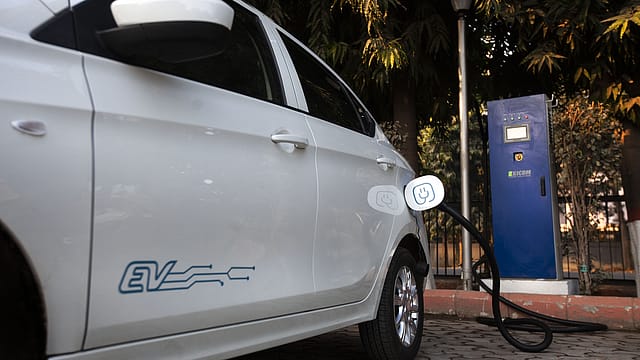Global EV adoption slows as subsidies end, charging network lags
ADVERTISEMENT

Electric vehicles' global market share climbed last year but is losing momentum due to reduced government subsidies, and concerns about availability of charging points, according to Moody's.
"This year's figure will come in somewhat below our previous expectation," the credit rating agency says.
As a result, some of the automakers that set the most ambitious electrification plans had to lower their targets.
Growth will come from better product availability, improved features especially driving range and lower prices, says Moody's.
China accounts for most global EV sales. Despite a slowdown in growth this year, Moody's expects EVs to reach about 40% of China vehicle sales by 2030 on the back of policy support and customer acceptance, as well as exports.
The Indian government is targeting 30% EV penetration by 2030.
“In the US, we now forecast BEVs will reach just 8.5% of new vehicle sales this year, below our prior view. Adoption grew steadily during 2023, but sales appear tepid so far this year on more stringent BEV tax credit rules,” the rating firm says.
January 2026
Netflix, which has been in India for a decade, has successfully struck a balance between high-class premium content and pricing that attracts a range of customers. Find out how the U.S. streaming giant evolved in India, plus an exclusive interview with CEO Ted Sarandos. Also read about the Best Investments for 2026, and how rising growth and easing inflation will come in handy for finance minister Nirmala Sitharaman as she prepares Budget 2026.
Insufficient charging infrastructure and high prices also weigh on sales. Europe's rule that all new cars and vans be zero emission from 2035 supports EV sales in the region. Still, government subsidies were recently reduced or even terminated, slowing adoption.
Moody’s maintains its forecast that globally, EV penetration will be around one-third in 2030 and nearly half by 2035. Stricter emission rules globally support that expectation, it says.
Meanwhile, global share of plug-in hybrids (PHEVs) increased to around 5.3% last year, from 3.6% in 2022. “For 2024 and 2025, we expect some further growth to around 6.6% and 7.7%, respectively. We considered PHEVs as a bridge technology, because having two propulsion technologies drives up vehicle prices,” says Moody’s.
Government subsidies and tax incentives are needed for most models to make the technology economical for consumers, the rating firm says.
Adoption of hybrid cars is supported in China, because they fall under the government's NEV category with EVs. Among major auto markets, China has the highest PHEV penetration rate at around 9.3%. By 2035, Europe plans to phase out PHEVs, which accounted for around 7.5% of new care sales (2023), but changes may come in a 2026 regulatory review.
In the US, PHEVs accounted for barely 2% of light vehicles sales last year. But the technology is increasingly seen as an attractive alternative by consumers concerned about driving range and charge point availability. PHEVs had a 2.5% share in the US during the last three months.
Moody’s says the current slowdown of EV adoption delays automakers' path to more profitable EV operations due to lower scale and lower sales prices. “We also expect the need for investments in BEVs will remain unchanged and substantial, while ICE technology also must be kept fresh for longer. On the other hand, consumer demand for vehicles remains robust, and we expect that higher sales of more profitable ICE vehicles will serve as a mitigant for ongoing pressure on profitability of traditional automakers' BEV operations,” it says.
